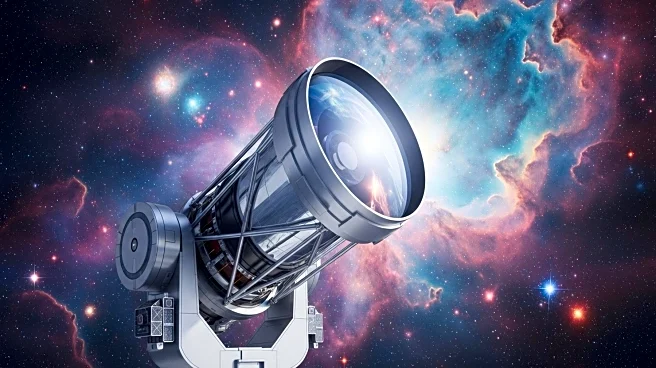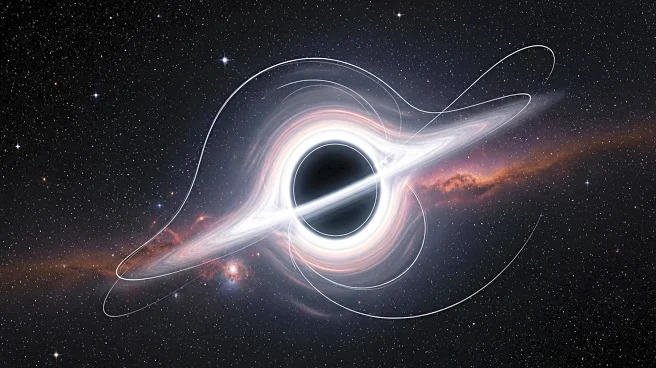What's Happening?
Astronomers have released a new image of the binary star system Eta Carinae's full spectrum, captured using the SOAR Telescope Echelle Spectrograph (STELES) in Chile's Atacama Desert. This advanced instrument breaks starlight into its constituent colors, allowing detailed study of atomic and molecular features in stellar atmospheres. Eta Carinae, located 7,500 light-years away, is known for its unusual activity, including the 'Great Eruption' in the 1840s. The new spectrum provides insights into the system's chemical composition, velocities of expelled material, and potential supernova evolution.
Why It's Important?
The study of Eta Carinae is crucial for understanding the life cycles of massive stars and their eventual supernova explosions. The data obtained from STELES can help astronomers learn more about the interactions between stars in binary systems and the dynamics of stellar winds and outflows. This research contributes to the broader field of astrophysics by enhancing knowledge of stellar evolution and the processes that lead to supernovae, which play a key role in the distribution of elements in the universe.
Beyond the Headlines
The use of advanced spectrograph technology like STELES represents a significant leap in astronomical research capabilities. It allows scientists to explore the physical conditions of distant celestial objects with unprecedented precision. The findings from Eta Carinae could influence future studies on other massive star systems and contribute to the development of theoretical models in astrophysics. This research also highlights the importance of international collaboration in advancing space science.










